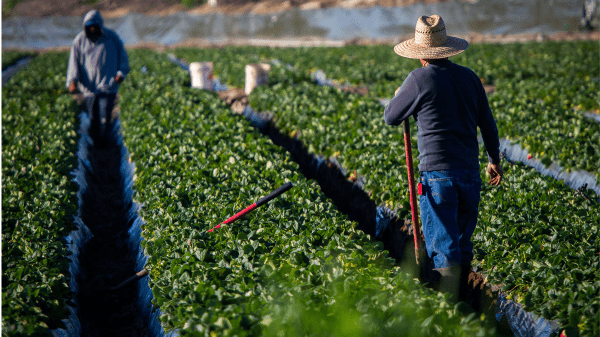Title 42 appears to be on its last legs.
This measure was implemented by the previous presidential administration as a precaution against the coronavirus. It was used to exclude over a million illegal immigrants from the south of the border on grounds of public health.
The Biden administration has long said it wanted to end Title 42. In mid-November, U.S. District Court judge Emmet Sullivan granted its wish, ruling that the order was “arbitrary and capricious” on the grounds that it no longer reflected the state of the pandemic. https://storage.courtlistener.com/recap/gov.uscourts.dcd.225870/gov.uscourts.dcd.225870.164.0.pdf
It is generally agreed that the removal of Title 42, whatever its merits or faults, will create major bureaucratic problems.

The Department of Justice asked for a five-week delay to “resolve resource and logistical issues,” and the judge agreed to postpone the start date of his order to December 21. https://www.politico.com/news/2022/11/15/immigration-judge-blocks-title-42-limits-00067083
In April 2022, the Department of Homeland Security (DHS) issued a statement describing its six-pillar program for border security after the end of Title 42. https://www.dhs.gov/sites/default/files/2022-04/22_0426_dhs-plan-southwest-border-security-preparedness.pdf
Measures include increasing resources such as personnel, transportation, and medical facilities “to support border operations”; “increasing . . . processing efficiency . . . to mitigate potential overcrowding”; “administering consequences for unlawful entry”; boosting the capacity of nongovernmental organizations (NGOs) to receive noncitizens after processing; “targeting and disrupting” criminal organizations trafficking in illegals; and “deterring migration south of our border.”
The DHS has issued a statement saying, “The United States will continue to fully enforce our immigration laws at our border. In response to the court’s order, the Department of Justice is filing an unopposed stay motion. The delay in implementation of the court’s order will allow the government to prepare for an orderly transition to new policies at the border.” https://www.dhs.gov/news/2022/11/15/statement-dhs-decision-regarding-title-42
The issue is of great importance to the produce industry because its labor crisis is extremely unlikely to be resolved without some effective policy to reduce illegal immigration at the southern border.
Both agricultural and farmworker organizations have pressed the Senate to pass the Farm Workforce Modernization Act, which has already been approved twice by the House of Representatives. Farm Workers Push for Congressional Action During Lame Duck Session – CounterPunch.org
“Farmers can only grow what they can pick,” says Cathy Burns, CEO of the International Fresh Produce Association. IFPA calls for immigration reform at ‘Leading the Way’ conference – Produce Blue Book
“Our current immigration system is shackling our ability to increase food production in the United States because our growers are unsure if they will have the workers they need to plant, grow, and harvest crops. Some of our members have actually gone out of business because they can’t get the workers they need.”
But farmworker bill is unlikely to become law unless it is passed in December by the lame duck Senate, since the House will revert to Republican control in January. And Republicans are split between a pro-business faction, which supports farm labor reform, and a populist element, which opposes it.
Immigration reform and farm labor reform operate in tandem. It is unlikely that either issue will be satisfactorily resolved without the other.



